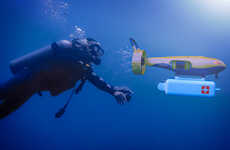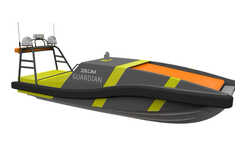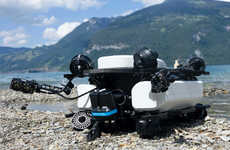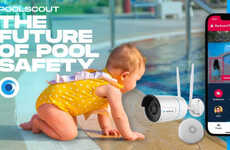
Rescue Buoy Monitors Swimmers and Seeks Out Those Who Struggle
Amelia Roblin — March 13, 2013 — Tech
References: behance.net & industrialdesignserved
It would still be advisable to have one human lifeguard on duty at beaches where these Rescue Buoys are situated, but the innovative concept would function as a keen extension to the eyes and the abilities of hired staff. Depending on the size of the swimming area, you might have one or more of these Robotic life guard assistants on duty, constantly monitoring the people in the water and analyzing their movements.
Should one of the devices detect unusual behavior, Jens Andersson's invention would capture a video, send it to the rescuer in real-time for confirmation of an emergency situation and proceed to propel itself towards the drowning victim. The Rescue Buoy is easy to mount and remains in place with the stabilized swimmer, acting as a marker for further aid. An electro magnetic field also keeps the sharks away.
Should one of the devices detect unusual behavior, Jens Andersson's invention would capture a video, send it to the rescuer in real-time for confirmation of an emergency situation and proceed to propel itself towards the drowning victim. The Rescue Buoy is easy to mount and remains in place with the stabilized swimmer, acting as a marker for further aid. An electro magnetic field also keeps the sharks away.
Trend Themes
1. Robotic Lifeguard Assistants - Developing robotic lifeguard assistants that can monitor swimmers and provide aid offers disruptive innovation opportunities in beach safety.
2. Real-time Emergency Video Monitoring - Creating a system that uses real-time video monitoring to detect and confirm emergency situations in water rescue can revolutionize lifeguarding techniques.
3. Swimmer Behavior Analysis - Using advanced technology to analyze and interpret swimmer movements can help in identifying potential drowning victims and provide timely assistance in water safety.
Industry Implications
1. Beach Safety - Integrating robotic lifeguard assistants and real-time video monitoring in beach safety protocols can greatly enhance the effectiveness of traditional lifeguarding practices.
2. Water Rescue Technology - Developing innovative water rescue technology, such as robotic rescue buoys, can greatly improve the efficiency and accuracy of water rescue operations.
3. Swimming Pool Management - Implementing swimmer behavior analysis technology in swimming pool management can help identify potential safety risks and prevent accidents.
2.4
Score
Popularity
Activity
Freshness























